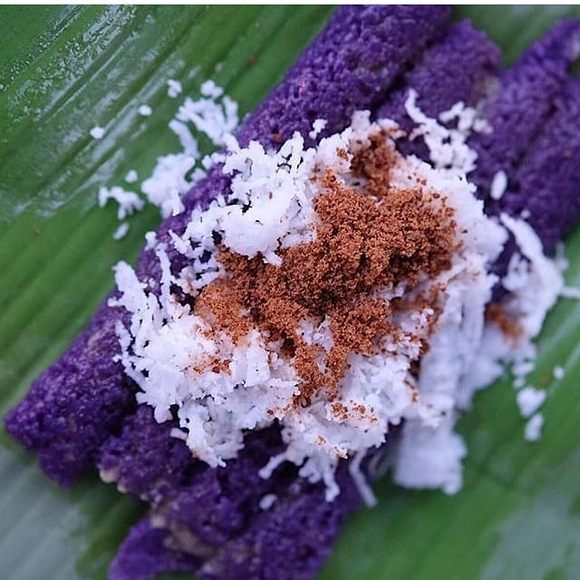Sweets
Puto Bumbong
During Christmastime in the Philippines, purple reigns with this colorful sticky rice snack.
The Philippines is home to one of the longest Christmas seasons in the world, stretching from the beginning of September until the end of December. Months of festivities are sustained by a wide array of delicious, often colorful treats, and among the most beloved is puto bumbong, a purple steamed rice sweet. Stand outside any Catholic church during Simbáng Gabi, the nine-day period of masses leading up to Christmas Eve, and you’re likely spot vendors serving up the brightly-colored, steaming snacks to churchgoers who stop at their stalls.
Puto bumbong traditionally gets its hue from a variety of sticky rice known as pirurutong, which is naturally a dark brownish purple. Preparing pirurutong typically takes several days, beginning with soaking a mixture of pirurutong and white sticky rice in salt water overnight. The mixture is then ground (either with a grinding stone or food processor) and hung to dry. Once it’s reached a moist texture, the rice concoction is poured into bumbong ng kawayan, or bamboo tubes, and steamed until it becomes a deep purple. After removing the rice from the tubes, vendors set several cylinders atop a banana leaf, generously slather them with butter or margarine, and top with a mix of freshly-grated coconut and muscovado sugar. Diners are encouraged to dig in immediately, as puto bumbong is a snack best eaten hot.
Though you can still find plenty of traditional puto bumbong, many vendors now use ube (purple yam) powder since pirurutong is a bit harder to come by. Some, hoping to really pump up the hue, add a drop of violet food coloring to the mix, though this is typically frowned upon. No matter the source of the purple, the dazzling dish is sure to spread holiday cheer to all of those able to get their hands on the sticky Christmastime staple.
Written By
 Abbey Perreault
Abbey Perreault















